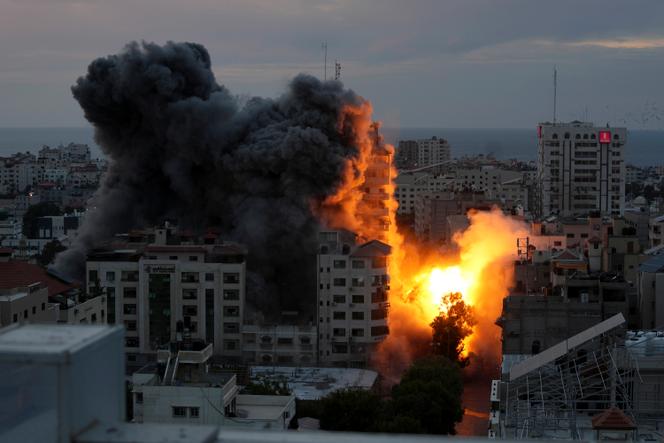
The date Hamas chose for its attack on the Jewish state was no coincidence: 50 years almost to the day since the outbreak of the October War, known as the Yom Kippur War in Israel. The unprecedented scale of the Palestinian movement's assault on both civilian and military targets on Saturday, October 7, sought to reshuffle the cards in the Israeli-Palestinian conflict, in the same way that the offensive launched by Egyptian President Anwar Sadat on October 7, 1973, shook up the Arab-Israeli balance of power.
In the collective imagination of Middle Eastern populations, the advance of Hamas commandos through the fortified fence surrounding the Gaza Strip was reminiscent of when Egyptian troops crossed the Bar Lev Line, the rampart built by Israel along the Suez Canal after its conquest of Sinai in 1967. Both were considered impassable, yet both ended up being breached.
The 1973 war, which Israel almost lost, is a source of lingering trauma in the Israeli psyche. It triggered a series of chain reactions, from the Camp David Accords to Israel's invasion of Lebanon, which fundamentally reshaped the Middle East. It is obviously far too early to predict the precise consequences of the new conflict, which broke out at the dawn of Simhat Torah, a holiday on the Jewish calendar, just as the October War began on Yom Kippur. The geopolitical landscape of the Middle East in 1973 bears little resemblance to that of today.
Evidently, the scale of the Hamas-led attack is unparalleled compared to the operations it has undertaken since 2007, the year it seized power in Gaza and imposed a blockade on the Palestinian sand strip. The Middle East is experiencing a new political and security seismic shift.
Setback inflicted on the Jewish state
The figures speak for themselves: By mid-afternoon, less than 12 hours after the start of hostilities, the Israeli authorities reported 70 dead and 900 wounded, victims of rocket attacks and infiltrating Hamas fighters. According to the Israeli media, "dozens" of civilians and soldiers were captured and taken to the Gaza Strip. The Palestinian enclave's Health Ministry put the figure at 198 killed and 1,610 wounded by the retaliatory bombardments carried out by the Israeli air force. At the end of the afternoon, the Israeli army announced that fighting was ongoing in 22 different locations in the southern part of the Jewish state. This was no longer a low-intensity conflict, as Israeli-Palestinian violence is usually described.
Beyond the unprecedented Israeli human toll, the setback inflicted on Israel is, like in 1973, of unprecedented symbolic brutality. Hamas waged war on Israeli soil with an intensity unseen since the creation of the Jewish state in 1948. In the past, the Islamist movement had managed to infiltrate a few of its men into its neighbor's territory, notably during the operation that led to the capture of French-Israeli soldier Gilad Shalit, in 2006. But these incursions have always been very brief and involved only a very limited number of fighters. In this case, it's a full-scale ground operation, with multiple points of penetration and dozens of participants. It is an assault similar to those regularly threatened by the Lebanese Hezbollah in its propaganda against Israel.
You have 55.57% of this article left to read. The rest is for subscribers only.